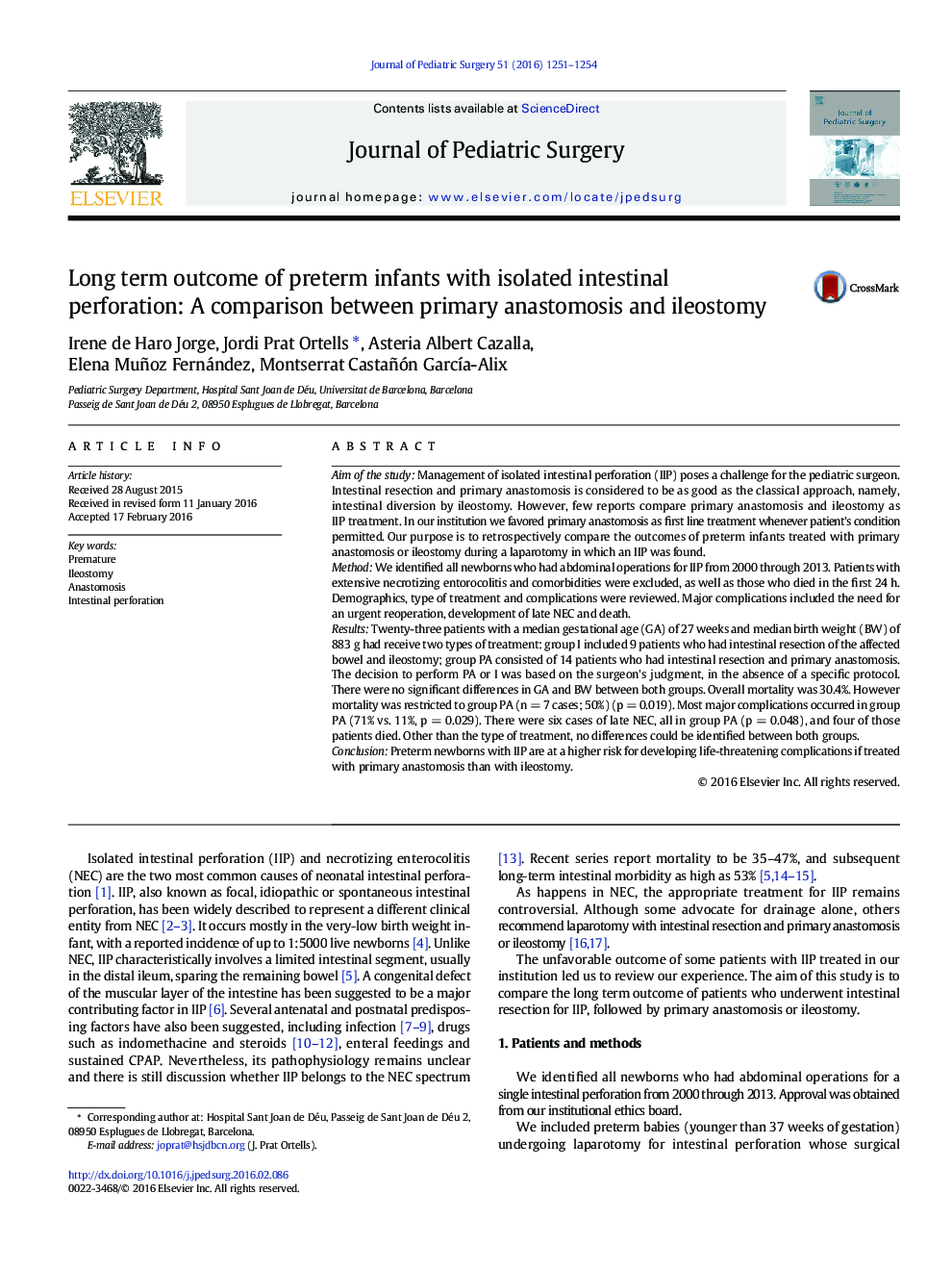| Article ID | Journal | Published Year | Pages | File Type |
|---|---|---|---|---|
| 4154742 | Journal of Pediatric Surgery | 2016 | 4 Pages |
Aim of the studyManagement of isolated intestinal perforation (IIP) poses a challenge for the pediatric surgeon. Intestinal resection and primary anastomosis is considered to be as good as the classical approach, namely, intestinal diversion by ileostomy. However, few reports compare primary anastomosis and ileostomy as IIP treatment. In our institution we favored primary anastomosis as first line treatment whenever patient's condition permitted. Our purpose is to retrospectively compare the outcomes of preterm infants treated with primary anastomosis or ileostomy during a laparotomy in which an IIP was found.MethodWe identified all newborns who had abdominal operations for IIP from 2000 through 2013. Patients with extensive necrotizing entorocolitis and comorbidities were excluded, as well as those who died in the first 24 h. Demographics, type of treatment and complications were reviewed. Major complications included the need for an urgent reoperation, development of late NEC and death.ResultsTwenty-three patients with a median gestational age (GA) of 27 weeks and median birth weight (BW) of 883 g had receive two types of treatment: group I included 9 patients who had intestinal resection of the affected bowel and ileostomy; group PA consisted of 14 patients who had intestinal resection and primary anastomosis. The decision to perform PA or I was based on the surgeon's judgment, in the absence of a specific protocol. There were no significant differences in GA and BW between both groups. Overall mortality was 30.4%. However mortality was restricted to group PA (n = 7 cases; 50%) (p = 0.019). Most major complications occurred in group PA (71% vs. 11%, p = 0.029). There were six cases of late NEC, all in group PA (p = 0.048), and four of those patients died. Other than the type of treatment, no differences could be identified between both groups.ConclusionPreterm newborns with IIP are at a higher risk for developing life-threatening complications if treated with primary anastomosis than with ileostomy.
